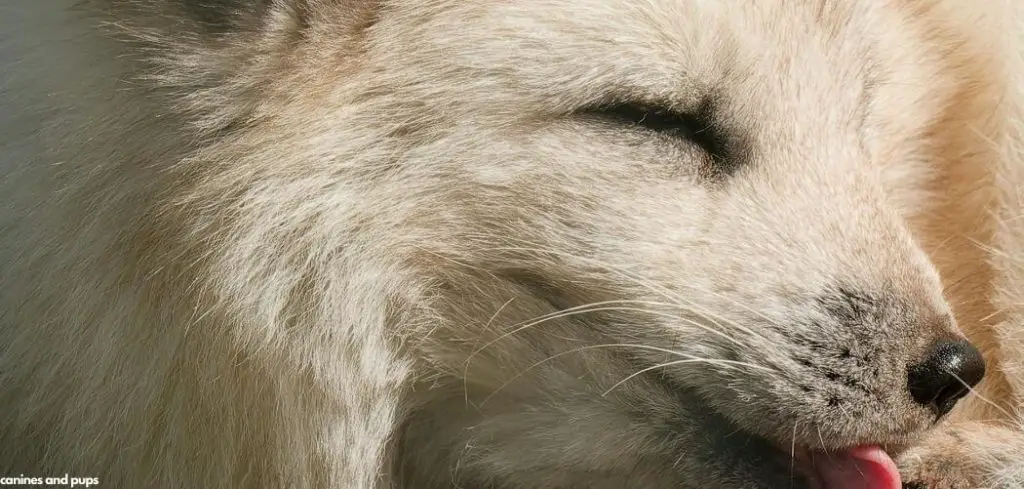A dog that keeps licking its paw when nothing seems to be there is a behavior that many dog owners notice with concern.
When a dog persistently licks a paw without any visible injury or foreign object, it can indicate underlying health or behavioral issues that need attention.
We outline the common reasons why a dog may keep licking its paw when nothing seems to be there, what you can do at home, and when to seek veterinary help.
Dog Keeps Licking Paw But Nothing There — Why It Happens
A dog may keep licking its paw when nothing seems to be there due to allergies, stress, boredom, or subtle injuries that aren’t immediately visible. Sometimes the issue is dermatological, such as dry skin or irritation, while in other cases, behavioral factors like anxiety or compulsive tendencies can drive the licking.
Understanding the root cause is important for preventing further irritation, infection, or chronic discomfort.

Dog Keeps Licking Its Paw When Nothing Seems To Be There: Common Causes
Allergies
Allergies are one of the most frequent reasons dogs lick their paws. Environmental allergens like pollen, dust, or mold can irritate the skin, prompting your dog to lick repeatedly.
Food allergies can also manifest as paw licking, particularly if certain ingredients trigger inflammation. Signs to notice include redness between the toes, mild swelling, or a subtle odor.
Left unchecked, persistent licking due to allergies can lead to skin infections or worsening discomfort.
Read more: Dog Excessively Licking Back Paws (Why it happens and how to help)
Irritation or Minor Injuries
Sometimes dogs lick paws due to minor irritations that are difficult to detect. This could include small cuts, splinters, or irritation from rough surfaces, ice, or chemical residues.
Even if nothing seems visible, the licking is your dog’s way of soothing discomfort. Owners may notice mild limping, sensitivity when the paw is touched, or slight swelling.
Ignoring these small irritations can allow infections to develop, making early observation crucial.
Boredom or Anxiety
Dogs often develop repetitive behaviors like paw licking when they are bored or anxious. Separation anxiety, stress from changes in environment, or lack of mental stimulation can trigger this behavior.
Dogs may also lick their paws as a self-soothing mechanism during stressful moments.
Owners may notice that paw licking occurs more during periods of solitude, or alongside other stress-related behaviors like pacing or whining.
Chronic anxiety-driven licking can result in hair loss, raw spots, or even secondary infections.
Dermatitis or Skin Conditions
Dermatitis, whether from contact irritants or autoimmune conditions, can cause dogs to lick paws constantly.
This may include reactions to soaps, shampoos, or chemicals in the home. Symptoms to watch for include redness, flaking skin, or small scabs.
Continuous licking can exacerbate these conditions, leading to more severe inflammation or bacterial infections. Timely treatment can prevent the cycle of irritation and licking from escalating.
Fungal or Bacterial Infections
Paws are prone to infections, even when not immediately visible. Yeast infections or bacterial overgrowth can cause itching, mild odor, and discomfort that your dog tries to alleviate through licking.
Early signs include subtle redness, swelling, or a moist appearance between the toes. Ignoring these infections can lead to more severe pain, swelling, and spread of infection, highlighting the importance of early detection.
Behavioral or Compulsive Disorders
In some cases, paw licking may be linked to compulsive disorders. Dogs with OCD-like tendencies may lick paws even in the absence of pain or irritation.
This behavior can become chronic and self-perpetuating. Owners might observe repetitive licking that seems disproportionate to any physical issue, often accompanied by other repetitive behaviors like tail chasing or excessive grooming.
Addressing compulsive licking may require behavioral training alongside medical evaluation.
What to Do
At home, start by examining your dog’s paw carefully for signs of irritation, small cuts, or foreign objects. Keeping paws clean and dry can reduce irritation, especially after walks in wet or dirty conditions.
Moisturizing paw balms or vet-recommended creams can help soothe dry or cracked skin.
Providing mental stimulation and physical exercise can alleviate boredom-driven licking, including puzzle toys, interactive play, and structured routines.
If allergies are suspected, note any patterns related to food or environment and discuss potential adjustments with your vet.
When to Call or Visit Your Vet
Immediate veterinary attention is warranted if you notice persistent swelling, redness, bleeding, foul odor, or signs of pain. Secondary infections or worsening dermatitis require professional evaluation and treatment.
If behavioral issues seem to dominate and self-soothing licking is causing raw spots or hair loss, your vet can recommend behavioral therapy or medications.
Chronic or worsening licking should not be ignored, as underlying health conditions may be subtle but impactful.
Read more: Dog licking paws excessively (When to worry)
Key Takeaway
Persistent paw licking in dogs, even when nothing appears visibly wrong, can indicate underlying health or behavioral issues.
Observing your dog’s patterns, keeping paws clean, and providing mental and physical stimulation are essential first steps.
Consulting your veterinarian ensures any medical causes are addressed promptly, preventing infections or chronic discomfort.
Paying close attention to this behavior allows you to maintain your dog’s comfort, health, and overall well-being.
